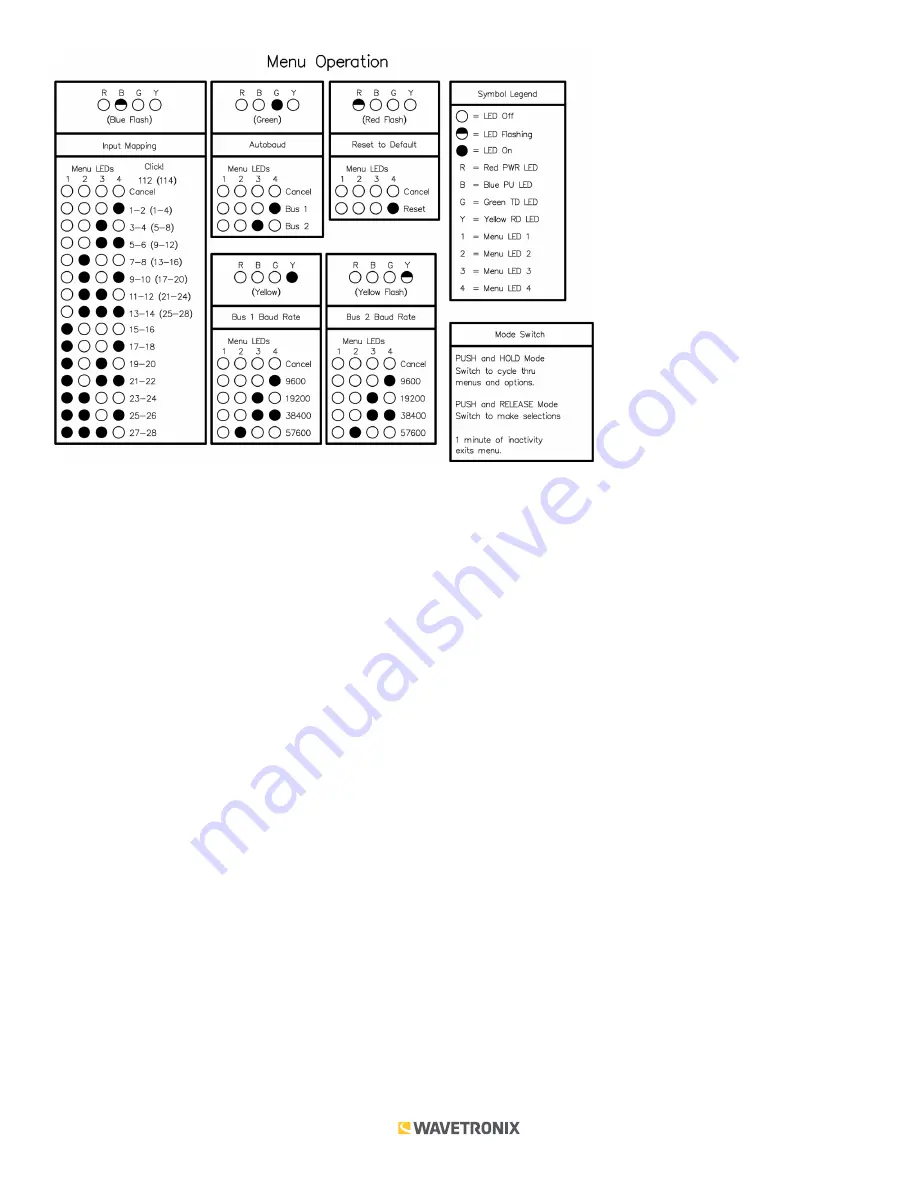
9 of 15
WX-501-0518 • 01.22
As shown above, the menu options are displayed on the Level 1 LEDs (multicolored) and the configuration
parameters are displayed on the Level 2 LEDs (all red).
If a configuration parameter has been set using the DIP switches (meaning that parameter is currently set to
Hardware
mode), you cannot change it using the front panel menu. After selecting that particular menu option
from the Level 1 LEDs, the Level 2 LEDs will display the configuration option set in the DIP switches but will not
allow you to modify the setting. When you have finished reviewing the setting, press the mode switch once to
leave Menu mode and return to normal operation.
Channel Input Map
The first configuration parameter that comes up when you’re cycling through the front panel menu is the channel
input map. To select this parameter, release the push-button when the blue LED flashes.
Note.
This parameter can also be changed using the DIP switches or Click Supervisor.
As mentioned earlier, the Click 112/114 devices receive serial datagrams from a SmartSensor. These datagrams
can contain many channels of detection data. Because the devices have fewer output channels than there are
possible input datagram channels received from the sensor, you must use the channel input map to map the
desired inputs to outputs. The Click 112 has two outputs and therefore must be mapped to two inputs; the Click 114
has four. (If you need more than two or four channels, you’ll need to use multiple devices daisy-chained together.)
As shown in the table below, the outputs are mapped sequentially—that is, they can only be mapped in
numerically ordered groups of two or four depending on which device you are using (1–2, 3–4, or 1–4, 5–8, etc.).
If you chose, for example, 17–20 (on a Click 114), then input 17 would be mapped to output 1, input 18 would be
mapped to output 2, input 19 would be mapped to output 3, and input 20 would be mapped to output 4.
You’ll notice the menu operation labels on the Click 112 and 114 both have input mapping information for both
devices combined. Make sure you are looking at the correct information for your device. The two sets of
information are separated out and displayed below.

































